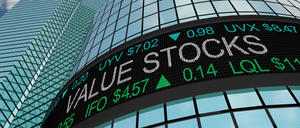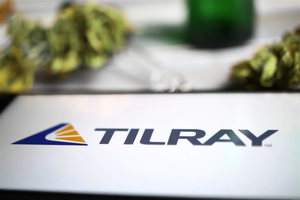The "South Korea Cement Industry Market Size & Forecast by Value and Volume Across 80+ Market Segments by Cement Products, Distribution Channel, Market Share, Import - Export, End Markets - Databook Q2 2025 Update" report has been added to ResearchAndMarkets.com's offering.
The cement market in South Korea is expected to grow by 4.9% annually to reach US$6.16 billion in 2025. The cement market in the country recorded strong growth during 2020-2024, achieving a CAGR of 5.8%. Growth momentum is expected to remain positive, with the market projected to expand at a CAGR of 4.5% during 2025-2029. By the end of 2029, the cement market is projected to expand from its 2024 value of US$5.87 billion to approximately US$7.36 billion.
This report provides a data-rich, forward-looking analysis of cement industry, covering market size, pricing trends, production, consumption, and segment-level performance from 2020 to 2029. It examines cement demand across key residential, non-residential, and infrastructure sectors alongside granular segmentation by cement type, distribution channel, end-user profile, and city tier.
South Korea's cement industry is undergoing a period of structural recalibration, shaped by declining domestic construction demand, stringent decarbonization mandates, and intensified focus on waste recycling and energy efficiency. While the residential and commercial sectors have slowed, public investment in infrastructure and industrial retrofitting continues to support base-level demand. Cement producers are investing in carbon capture technologies, alternative fuel systems, and SCM (Supplementary Cementitious Materials) integration to align with national climate goals. However, the industry is challenged by energy price volatility, labor shortages, and increasing environmental compliance costs. Going forward, success will depend on strategic digitalization, cross-sector collaboration, and policy-driven product innovation.
South Korea's cement industry is navigating a structural realignment fueled by declining domestic demand and intensifying climate regulations. While public infrastructure and industrial retrofitting offer some volume stability, long-term growth will come from innovation, exports, and sustainability differentiation. Companies that invest in carbon capture, clinker substitution, and smart plant operations will not only meet regulatory thresholds but also gain access to government-led green construction opportunities.
Cross-sector collaboration, workforce upskilling, and international market development will be essential to mitigate domestic saturation risks. With coherent policy alignment and targeted investment, South Korea's cement sector can become a key enabler of the country's industrial decarbonization vision while enhancing its global competitiveness.
Public Infrastructure and Industrial Maintenance Are Supporting Cement Demand
- Government-Backed Infrastructure Is Stabilizing Cement Consumption: Cement demand remains supported by public investment in road maintenance, railway upgrades, and flood prevention projects under Korea's Green New Deal framework. The Ministry of Land, Infrastructure and Transport (MOLIT) continues to invest in infrastructure resilience, with regional contractors sourcing bulk cement from major producers like Hanil and Sungshin Cement.
- Industrial and Port Facility Renovations Are Generating Niche Demand: The retrofitting of logistics hubs, ports, and aging manufacturing facilities - particularly in Ulsan and Incheon requires durable, specialty cement. Cement demand for these projects includes sulfate-resistant and high-durability mixes suited for harsh environmental conditions.
- Residential and Commercial Construction Activity Remains Weak: New apartment starts and commercial tower projects have declined due to elevated construction costs, tighter lending standards, and real estate cooling measures. Major cement firms reported reduced dispatch volumes for bagged cement in Seoul and Busan in H1 2024.
Partnerships and Decarbonization Innovation Are Driving Sector Evolution
- Carbon Capture Technologies Are Being Scaled Through Industry Alliances: Korea Cement Association (KCA) and major firms like Ssangyong C&E have partnered with Korea Energy Agency to pilot full-scale CCU (Carbon Capture and Utilization) systems. In 2024, Hanil Cement initiated a commercial demonstration project at its Gangwon plant, focused on integrating CO2 mineralization into cement mixes.
- Cross-Sector Collaborations Are Supporting Circular Economy Goals: Cement firms are collaborating with municipalities and the steel sector to source slag, fly ash, and incinerator ash for blended cement production. Sungshin Cement signed an MoU with the Seoul Metropolitan Government in 2023 to co-process city waste in exchange for RDF supply.
- Low-Carbon Cement Lines Are Expanding Product Portfolios: Companies have launched blended cement lines incorporating calcined clay and granulated slag to meet public procurement emissions standards. Ssangyong C&E is marketing "Green Premium Cement" with over 30% clinker substitution for government green building projects.
Production is Constrained by Energy Costs, Environmental Compliance, and Labor Issues
- Electricity and Fuel Price Spikes Are Impacting Margins: Rising LNG and electricity costs have increased the operational cost of kilns, especially during winter and peak-demand seasons. Some firms have transitioned to off-peak production scheduling and are investing in solar panels and waste heat recovery to mitigate energy volatility.
- Tightened Environmental Regulations Are Raising Compliance Burdens: Emissions limits on NOx, SOx, and particulate matter have been lowered under the revised Clean Air Conservation Act. Cement plants are now required to report real-time stack emissions and submit quarterly environmental performance reports.
- Workforce Shortages and Aging Labor Base Are Slowing Plant Upgrades: A shortage of skilled maintenance technicians and process engineers is delaying automation and modernization projects. Cement producers have ramped up recruitment and training but continue to rely on digital tools for workforce optimization.
Moderate Growth Outlook Backed by Green Investment and Export Opportunity
- Green Public Procurement Will Drive Demand for Low-Carbon Cement: Government projects under the Korea Green Remodeling Initiative and public housing decarbonization schemes are prioritizing EPD-certified materials. Firms with certified low-carbon cement are better positioned to qualify for school, hospital, and public transport infrastructure contracts.
- Export Channels Offer Relief Amid Domestic Slowdown: South Korean cement and clinker exports to Southeast Asia and the Middle East have increased in early 2024.Ssangyong and Hanil have reported dispatches to Indonesia, Bangladesh, and UAE via Busan and Gwangyang ports.
- Industrial Decarbonization Funds Will Support Innovation: Government grants and low-interest loans under the Carbon Neutrality Fund are enabling cement firms to invest in CCU, kiln electrification, and SCM R&D. The industry is expected to ramp up blended cement output over the next three years as part of its national carbon neutrality roadmap.
Risks Are Concentrated in Energy Exposure, Policy Complexity, and Market Saturation
- High Energy Dependence Exposes Sector to Global Price Shocks: The sector's reliance on imported fossil fuels makes it vulnerable to geopolitical disruptions and exchange rate volatility. Firms are lobbying for long-term renewable energy PPAs to stabilize electricity pricing for industrial consumers.
- Overlapping Regulations and Permit Delays Are Slowing Innovation: Fragmented environmental and industrial licensing processes across agencies have delayed several plant upgrades and co-processing initiatives. Industry groups have called for a centralized permitting body to streamline compliance for cement and heavy manufacturing.
- Market Saturation and Fixed Capacity Limit Upside Potential: Domestic capacity remains underutilized amid soft private sector demand, especially in urban housing. Without significant export expansion or public sector acceleration, firms risk prolonged underperformance despite capital investment.
Scope
South Korea Cement Industry Overview
- Cement Production KPIs: Volume and Value
- Cement Consumption KPIs: Volume and Value
- Average Cement Price Trends: Tracked at overall and cement-type level
South Korea Cement Market by Type of Cement
- Portland Cement
- Blended Cement
- Specialty Cement
- Green Cement
Blended Cement Market by Subtypes of Cement
- Type IS(X) - Portland-Slag Cement
- Type IP(X) - Portland-Pozzolan Cement
- IL(X) - Portland-Limestone Cement
- Type IT - Ternary Blended Cement
Specialty Cement Cement Market by Subtypes of Cement
- Rapid Hardening Cement
- High Alumina Cement
- White Cement
- Sulfate-Resistant Cement
- Other Niche Specialty Cements
South Korea Cement Market by Key Sector
Residential Construction
- Multi-Family Housing
- Single-Family Housing
Non-Residential Construction
Commercial Buildings
- Office Buildings
- Retail Spaces
- Hospitality Facilities
- Restaurants
- Sports Complexes
- Other Commercial Properties
Industrial Buildings
- Manufacturing Units
- Chemical & Pharmaceutical Facilities
- Metal and Material Processing Plants
Institutional Buildings
- Healthcare Facilities
- Educational Institutions
- Other Institutional Structures
Infrastructure & Other Construction
South Korea Cement Market by Distribution Channel
- Direct Distribution (B2B Sales)
- Indirect Distribution (Retailers, Dealers)
South Korea Cement Market by End-User
- Ready-Mix Concrete Producers
- Concrete Product Manufacturers
- Individual Consumers (Self-use)
- Other Industrial/Commercial Users
South Korea Cement Market by Location Tier
- Tier-I Cities
- Tier-II Cities
- Tier-III Cities
South Korea Cement Trade Dynamics
- Key Export Destinations
- Key Import Sources
Competitive Landscape: South Korea Cement Market
- Market Share Analysis of Key Players
For more information about this report visit https://www.researchandmarkets.com/r/cka5vd
About ResearchAndMarkets.com
ResearchAndMarkets.com is the world's leading source for international market research reports and market data. We provide you with the latest data on international and regional markets, key industries, the top companies, new products and the latest trends.
View source version on businesswire.com: https://www.businesswire.com/news/home/20250714432004/en/
Contacts
ResearchAndMarkets.com
Laura Wood, Senior Press Manager
press@researchandmarkets.com
For E.S.T Office Hours Call 1-917-300-0470
For U.S./ CAN Toll Free Call 1-800-526-8630
For GMT Office Hours Call +353-1-416-8900






